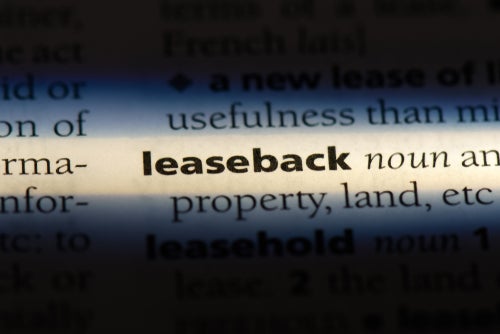
When times are tough, leaseback offers small business owners options when facing cashflow constraints, but the funding option has both pros and cons that need to carefully weighed up if leaseback is to be considered, according to Ramzi Benkraiem, Souad Brienette and Sabrina Khemiri.
Since early 2020, most countries have been heavily affected by Covid-19. The United Nations secretary-general António Guterres rightly described the pandemic as the worst global crisis facing humanity since the Second World War.
After first emerging in China the spread of the virus pushed many countries to institute national lockdowns and quarantine policies to try to flatten the exponential growth curve of infections. As a result, global economies have faced unprecedented decline and many companies have been forced to cease their activities, leading to operational or liquidity crises.
In times of crisis, SMEs are usually the most affected because they have fewer resources and a relatively high failure rate [1]. Bearing this in mind, governments around the world have put in place measures to support SMEs’ cashflow and try to prevent them from going bankrupt.
In the UK, the Federation of Small Businesses (FSB) warned that in the absence of solid support, 250,000 SMEs were on the way to bankruptcy as a result of Covid-19 and the government put in place a series of financial measures to support SMEs [2]. On top of the £4.6bn support plan intended for the hardest-hit companies announced in early 2021, Chancellor of the Exchequer Rishi Sunak has promised £520m to spur SMEs innovation and boost their productivity in his new budget on 3 March.
Indeed, in productivity (output per hour worked) the UK has a deficit of 16% when compared with other G7 members, and of more than 20 % when compared with the US and Germany. These measures could help close Britain’s productivity gap with rival nations. But what other solutions are there to support SMEs’ cashflow in times of crisis and avoid defaults?
How well do you really know your competitors?
Access the most comprehensive Company Profiles on the market, powered by GlobalData. Save hours of research. Gain competitive edge.

Thank you!
Your download email will arrive shortly
Not ready to buy yet? Download a free sample
We are confident about the unique quality of our Company Profiles. However, we want you to make the most beneficial decision for your business, so we offer a free sample that you can download by submitting the below form
By GlobalDataLeaseback – a plausible solution in times of crisis?
The global financial crisis has revealed the importance of liquidity for companies. Facing cashflow constraints, companies are postponing repayments to lenders, which in turn aggravates their situation by making it more difficult to obtain credit in the future. In such a context, the use of disintermediated financing tools such as leaseback appears to be a real financing lever.
Leaseback, also called sale-leaseback, could be a solution for business managers to overcome their cashflow difficulties, particularly in times of crisis when banks restrict their credit offers. Leaseback is an arbitrage transaction on property assets. The company sells one or more property assets to a leasing company and then leases them back for a specific period under specific terms. The company then maintains the use of the transferred asset and receives cash. It is a long-term contract with a buy-back option allowing the company to regain ownership of its assets in return for the payment of a price fixed in the contract.
This para-banking technique allows the company to generate immediate cashflow, but it is not a way of financing to meet a structural cash position. Leaseback is for businesses with cashflow difficulties due to special circumstances, notably in times of crisis. Leaseback is also more suited to companies that are financially sound but have sudden liquidity problems, since leasing companies will consider the overall financial situation of the company before going ahead with this type of contract.
Pros and cons
Compared to owning assets, leaseback has several advantages. It allows the company to generate cashflow and to benefit from tax breaks since leasing fees are deductible expenses. However, there are disadvantages too. A company that chooses to lease back will have fewer assets, which will reduce its debt capacity. This is because fixed assets are the collateral usually required by banks and are an important measure of the company’s solvency.
Moreover, SME owners and directors need to be careful about the destination of the cash generated by the leaseback operation. Using this cash solely to reduce balance sheet debt only postpones cashflow problems. A better strategy is to use the cash generated to finance new investment and generate added value that can be quickly converted into cash.
SMEs are key worldwide drivers for economic growth, innovation, and employment. Unfortunately, SMEs are more likely to be financially constrained than large companies. This is why leaseback could be a plausible solution for SMEs financing during economic downturn periods, including the current crisis.
The authors are: Ramzi Benkraiem, professor, Audencia Business School, France; Souad Brienette, associated professor, EDC Paris Business School; Sabrina Khemiri, lecturer, Paris-Saclay University.
This article is based on a longer paper ‘Cash management issues during the Covid-19 crisis: is leaseback a credible solution?’
Notes
[1] https://voxeu.org/article/support-small-businesses-amid-covid-19
[2] https://www.instituteforgovernment.org.uk/explainers/coronavirus-support-businesses-first-lockdown






